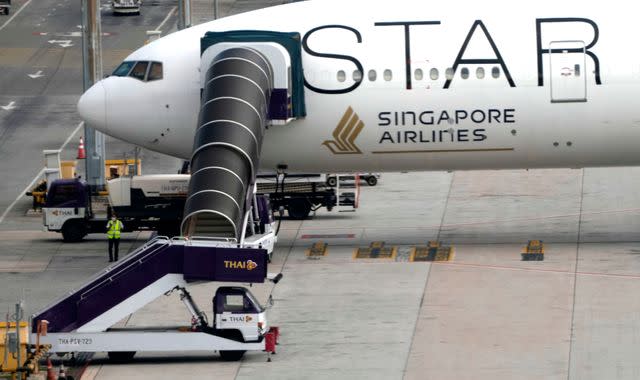Singapore Airlines Implements Safety Measures Following Fatal Turbulence Incident
Singapore Airlines (SIA) has introduced comprehensive safety protocols in response to the severe turbulence experienced by Flight SQ321 from London to Singapore on May 21, which resulted in one fatality and numerous injuries.
Some frequent fliers have criticized the new safety measures, describing them as hasty and claiming they have negatively impacted in-flight service and increased stress levels among cabin crew, according to a report by The Straits Times on Thursday.
The revised safety procedures mandate the suspension of meal service and require cabin crew to remain seated and buckled when the seatbelt sign is illuminated. This policy change has affected both passengers and crew, reported The Straits Times.
Previously, only hot drinks and soup were not served when the seatbelt sign was on, and meal service could continue at the crew’s discretion. However, now all meal services must be completely halted.
Flights from Europe to Singapore often traverse a turbulent patch over the Andaman Sea, part of the Indian Ocean west of Thailand. Feedback from crew members and passengers has highlighted the impact of these changes.
A flight attendant described experiencing over an hour of turbulence on a recent Singapore-India route, leaving minimal time for meal service. “Some passengers don’t understand why the service policy change is important and rate service as average to poor via the customer feedback channel after flights where service was affected by turbulence,” she told the broadsheet. “We’re stressed and fatigued, but we have no choice but to adapt.”
Another flight steward mentioned that adjustments such as removing after-takeoff drinks are being made to manage meal service times. He noted that passenger reactions are mixed, with some understanding the necessity while others feel dissatisfied. During pre-flight briefings since the incident, in-flight managers have been checking on crew members’ well-being, and a counseling team has been established to support them.
Despite the increased stress, one crew member with over a decade of experience emphasized that safety remains the priority. “While it might be more stressful as meal service may be affected, I think the crew will try to maintain the same service standards safely,” the crew member said. “We can’t fight Mother Nature.”
John Tan, lead professional officer at the Singapore Institute of Technology’s air transport management program, highlighted the importance of adaptability in aviation safety. “Prompt responses are necessary to protect passengers and crew effectively. Enacting policy changes in response to incidents fosters a culture of continuous safety improvement,” he told The Straits Times. However, balancing safety and service quality may pose a challenge for SIA, Tan added. This might require retraining crew or altering service delivery methods to maintain quality without compromising safety.
Shukor Yusof, founder of aviation consultancy Endau Analytics, expressed confidence that SIA’s service quality would not suffer due to the new protocols. “The decision was made after careful consideration and the urgent need to prevent injuries to passengers and crew in the future,” he said.
Some netizens have suggested that passengers bring their own food and drinks on board in case meal service is suspended due to turbulence, especially on short- and medium-haul flights, according to The Straits Times.




